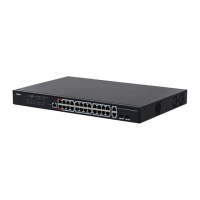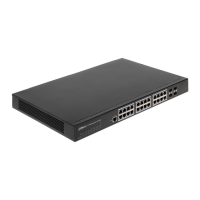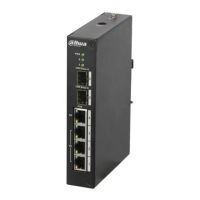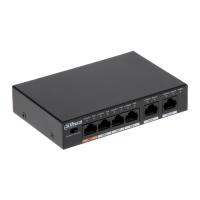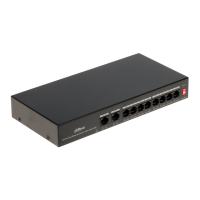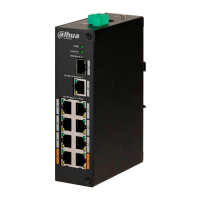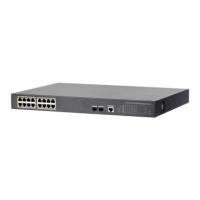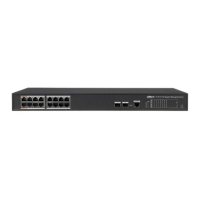
Do you have a question about the Dahua D-PFS4226-24ET-240 and is the answer not in the manual?
Details safety precautions and warnings to prevent hazards and property damage.
Provides a record of changes and updates made to the manual across different versions.
Specifies conditions for safe and proper operation of the device, including temperature and power.
Outlines necessary steps and conditions for installing the device safely and correctly.
Lists conditions that must be met before logging into the switch's web interface.
Step-by-step guide on how to access the switch via the web interface using username and password.
Overview of the web management screen and its components for device monitoring.
Guides on viewing and setting system details like time, date, and software version.
Instructions for setting up IP address, subnet mask, and default gateway for network connectivity.
Procedure for updating the switch's firmware to the latest version for enhanced features and security.
Steps to modify the default login password for enhanced security.
Methods to reset the switch to its factory default settings.
Process for rebooting the switch to apply changes or resolve issues.
How to view system logs to monitor operations, errors, and warnings.
Accessing software license agreements and legal notices.
Basic port configuration parameters affecting the switch port's working mode.
Process for copying packets from one or more ports to a destination port for analysis.
Viewing port statistics like transmit/receive packets, collisions, and errors.
Setting port speed limits to restrict inbound/outbound data packet exchange rates.
Limiting broadcast flows to prevent network performance degradation caused by broadcast storms.
Configuring the port's long-distance transmission mode for extended reach.
Achieving layer 2 isolation between messages by grouping ports for enhanced security.
Configuration related to Spanning Tree Protocol (STP) for ring network topology.
Methods for creating and managing Virtual Local Area Networks (VLANs).
Combining multiple physical ports into one logical port to increase bandwidth and reliability.
Configuring security features like MAC address lists, binding, and filtering.
Setting up the Simple Network Management Protocol (SNMP) for network monitoring.
Configuring IEEE 802.1x port-based network access control for user authentication.
Configuring Network Attached Storage (NAS) authorization status for port access control.
Setting up the RADIUS server address for centralized authentication.
Managing and controlling multicast data forwarding using IGMP Snooping.
Enabling secure web access using HTTPS by creating server certificates.
Setting up and managing Power over Ethernet (PoE) power allocation and status.
Monitoring PoE events like overload, short circuit, and thermal shutdown.
Enabling power saving features for PoE ports by configuring off and on times.
Enabling compulsory power delivery for non-standard PD devices.
Enabling PD Alive function to detect and restart crashed cameras via PoE.
Essential security practices including strong passwords and firmware updates.
Optional security enhancements like physical protection, regular password changes, and account locking.
